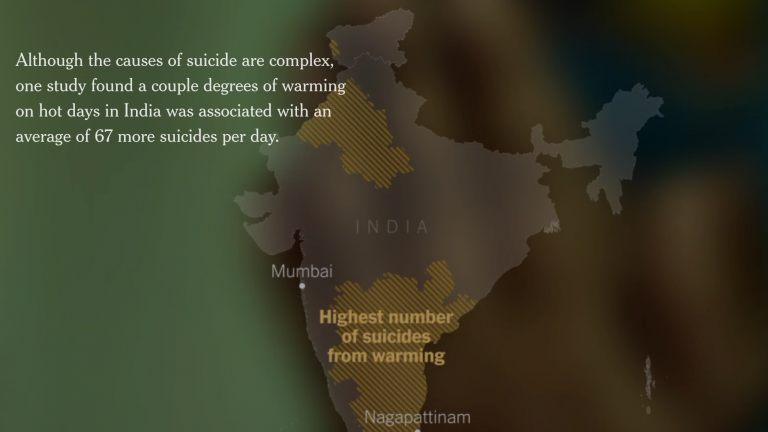
On the 26th of October, the New York Times ran an evocative piece called "The Uninhabitable Village" on farmer suicides and rising temperatures in Tamil Nadu. The Tamil country has a special significance for me since I am Tamil, being born about two hundred miles from Nagapattinam where this story was reported. While I was reading - viewing, really - this story, I was struck by the correlation between farmer suicides and warmer temperatures. That, in turn lead me to recent work by Tamma Carleton, with an eye popping statistic:
UC Berkeley researcher Tamma Carleton discovered that warming a single day by 1 degree Celsius (1.8 degrees Fahrenheit) during India’s agricultural growing season leads to roughly 65 suicides across the country, whenever that day’s temperature is above 20 degrees Celsius (68 degrees Fahrenheit). Warming a day by 5 degrees Celsius has five times that effect.
That's 65 additional suicides per day. We are at the threshold of our second season on climate justice and it's these stories that I want to understand more deeply. Farmer suicides have been a problem in India for a long time and are directly tied to neoliberal economic policies and the move towards intensive, market driven agriculture.
Anthropogenic warming is only going to make this worse - rising temperatures drives crop failures and will also make input costs more expensive (imagine the killing to be made by the Monsanto's of the world by marketing "heat-resistant" seeds) and of course, water will be the scarcest commodity of all.
Incidentally, Tamil Nadu is one of the richest and most industrialized states in the Indian Union, which is why the men in the NYT story can migrate toward industrial employment. What happens to the women when the men migrate, temperatures rise and you're responsible for agricultural labor and sustanence?
Climate justice is intersectional by its very nature - it cannot be understood in isolation from food, water, gender, geography and imperial history and in my view, there's no solution without substantial reparations from the west.





